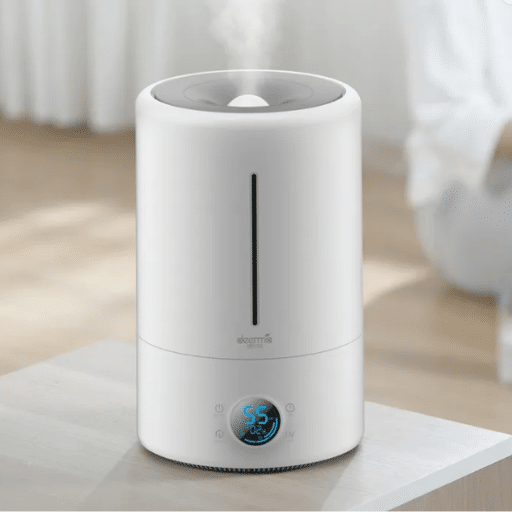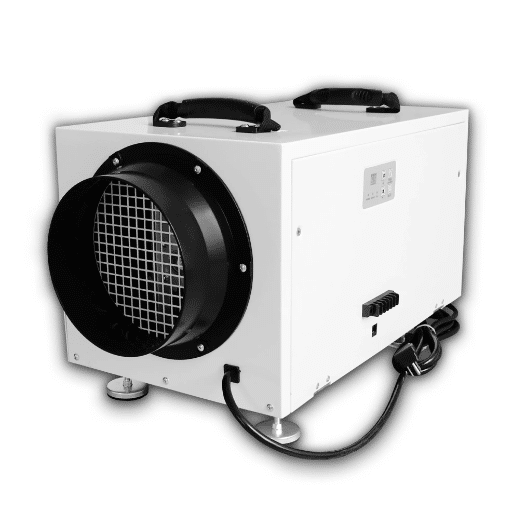The growth of mold is a typical but serious issue that usually affects the structural integrity of your house and the health of its inhabitants. Mold is one of the most common causes of allergies and respiratory problems; it grows in moist and humid places constantly making it very necessary to take proactive steps against its spread. This write-up delves into the power of dehumidifiers as game-changing tools in both preventing mold growth and enhancing the overall air quality of your house. It doesn’t matter if you want to safeguard your residence or keep your family healthy; this guide will offer you practical tips and powerful methods to get rid of the mold right where it starts.
Understanding Mold and Its Impact
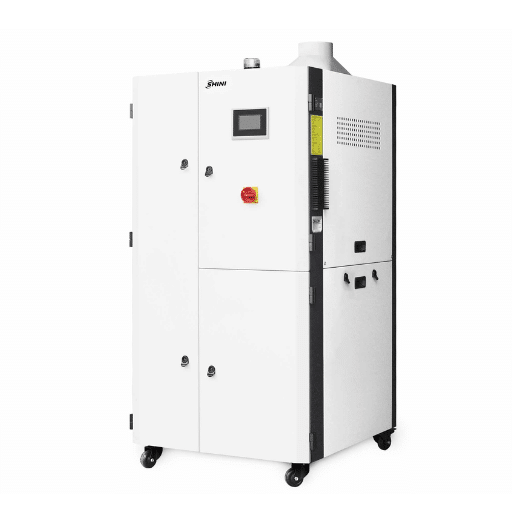
Mold is one kind of fungus that thrives in moist, humid places. Its growth can be very fast on surfaces such as walls, ceilings, and floors, mostly in poorly ventilated areas. The exposure to mold can have severe health consequences like respiratory issues, allergy attacks, and worsened asthma symptoms. Furthermore, mold can cause the structural support of your house to deteriorate by destroying materials like wood and drywall. Thus, it is of utmost importance to prevent mold for keeping your home safe and healthy, and among the many methods to impede its growth, controlling moisture is extremely effective.
What is Mold and Why Does It Grow?
Mold is a fungus that prefers warm, wet, and humid places to live. It multiplies by distributing tiny spores that can float away in the air, land on a surface, and if the environment is just right, the spores will start to grow. Mold requires two things for its existence—moisture and a source of food—therefore, it is commonly found in the bathrooms, kitchens, basements, or any place where water leaks and lack of airflow occur. The latest findings show that the general situations that favor the development of mold include indoor humidity levels that are too high (over 60%), condensation on windows or walls, and water leaks resulting in not enough air getting through. Mold has a preference for such materials as wood, drywall, carpet, and insulation because they are the sources of food and grow very quickly on them. Knowing what conditions foster mold growth is essential to preventing and controlling its proliferation effectively.
Health Effects of Mold and Allergies
Mold exposure can lead to various health issues, especially for those who are mold sensitive or have allergies. Mold releases various substances, including allergens, irritants, and occasionally mycotoxins, which are considered toxic and can be detrimental to human health. Among the five most common health effects caused by mold exposure, we start with the following:
Allergic Reactions
allergies due to mold can be manifested by symptoms like sneezing, a runny nose, itching in the eyes and skin rashes. The symptoms mostly resemble those of seasonal allergies and are dependent on the sensitivity of the person for their intensity.
Asthma Exacerbation
Mold exposure worsens the condition of those who suffer from asthma. Such people experience more frequent wheezes, and breathing becomes difficult at times, thus tightness in the chest, which eventually leads to the condition being tougher to control.
Respiratory Issues
Continuous breathing in of mold spores may cause respiratory illnesses like chronic coughing, sore throat, and, because of being immune-compromised, lung infections may occur.
Fatigue and Headaches
Being in areas with a lot of mold can cause tiredness, long-lasting headaches, and even dizziness sometimes. This is commonly due to the continuous inhalation of mycotoxins.
Sinus Congestion and Eye Irritation
Mold allergens can irritate mucous membranes, leading to inflammation and sinus congestion. Mold can also cause eye irritation symptoms such as redness, watering, and itching through airborne allergens.
Recognizing these health effects brings to light the need for proper indoor ventilation to control mold growth and consequently, promote good health.
The Relationship Between Humidity and Mold Growth
Humidity is a key factor in mold’s life cycle and spread. Mold loves high-humidity areas, and if humidity is controlled, one can be sure that mold will not thrive there. The following points clarify how humidity affects mold very well:
Optimal Humidity Levels for Mold Growth
Mold usually grows when indoor humidity is more than 60%. The high humidity levels provide the wet conditions that mold requires to grow and spread on surfaces.
Poor Ventilation and Moisture Accumulation
The areas where there is poor air circulation like basements and bathrooms usually have very high humidity that leads to the building up of moisture that supports the growth of the fungus.
Condensation on Surfaces
If warm and moist air is allowed to come in contact with cold surfaces, the moisture gets converted to water droplets i.e. condensation, that leads to a wet environment where mold spores can settle and grow.
Temperature and Humidity Interaction
The combination of higher temperatures and high humidity accelerates mold growth; thus good temperature and humidity management become the mainstay in mold prevention.
Seasonal Influence on Humidity Levels
Humidity levels are generally high during summer or in tropical areas thus the risk of mold attack is increased especially in places where the indoor environment is not monitored.
However, the monitoring and controlling of indoor humidity levels at 30-50% can help avoid mold growth and provide a healthier living space for the homeowner.
How a Dehumidifier Works
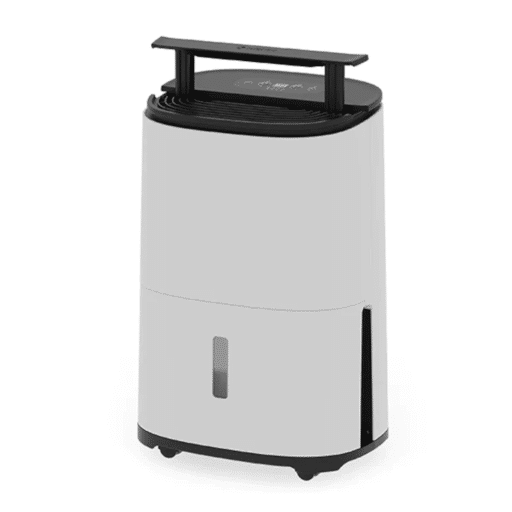
A dehumidifier is a device that takes away extra moisture from the air, helping to maintain indoor humidity levels of 30-50%. The working of the dehumidifier can be explained in a simple yet efficient manner through three major steps:
Air Intake
To start with, the dehumidifier utilizes a blower to suck in the humid air from the nearby area. Before that, the air usually goes through a filter that removes dust, allergens, and other small particles present in the air, thus improving the quality of the air along with dehumidification.
Moisture Removal
The very first air is thereafter passed along to where the chilled coils or plates are situated. The coils are cooled with a refrigerant which leads to the condensation of the air’s moisture into water drops. This condensing takes place because of the cold surfaces which pull down the air’s temperature and, thus, reduce its capacity of holding vapor. Some of the modern units that perform extremely well are capable of taking out 50 to 60 pints of water out of the air per day, depending on the room size and humidity level.
Dry Air Discharge
Finally, after the moisture has been eliminated, the now dry, dehumidified air is warmed up a tad bit and then blown back into the room through an outlet vent, thus helping in sustaining a pleasant indoor atmosphere.
Key Data and Advancements in Dehumidifier Technology
Energy Efficiency: Regrading dehumidifiers from the past, the Energy Star-certified ones are not only the same ones but the latest ones too, and they consume up to 15% less energy when compared to the non-certified ones.
Smart Features: The newest devices come with smart controls that allow users to set humidity goals or monitor device performance through their mobile applications.
Coverage Area: There exists a common correlation between the area size and the capacity of the dehumidifier unit; for example, a mid-range device can easily cater up to 4,500 sq. ft. This area is adequate to reap the benefits of the unit’s performance.
Water Storage and Drainage Options: A removably tank meant for water collection is almost the norm for every dehumidifier. The upper-end cutting-edge models sometimes, however, come equipped with a continuous drainage feature through a hose connection, thus, eliminating the need to empty the tank manually.
The dehumidifier’s main role is to reduce air moisture, and it does this by completely preventing mold, mildew, and other moisture-related problems so that the indoor environment remains healthful.
Types of Dehumidifiers
A wide assortment of dehumidifiers is there, which can cater to different needs and environmental conditions. The next is a list of five types commonly used, together with features and applications of each type:
The mechanism of these dehumidifiers is based on cooling coils which facilitate condensation of air moisture. They are best suited for warm and humid areas and the spots like basements or bathrooms. The main drawback is that they are not much effective in winters, as the efficiency drops in low temperatures.
Desiccant Dehumidifiers
The desiccant models extract water by using a special material that absorbs moisture. Their main advantage is the dependence on low temperatures, so they fit garages, crawl spaces, or unheated rooms. This type of humidifier is especially useful in spots where refrigerant dehumidifiers are not very effective.
Whole-House Dehumidifiers
Whole-house dehumidifiers are usually set up in the HVAC system to control the moisture of the whole house. They are the most powerful and effective units suitable for about 2500 square feet. If the user needs comprehensive humidity management, this choice is the best.
Portable Dehumidifiers
Portable dehumidifiers are lightweight, small, and designed mainly for small rooms or for users who need to move the unit from room to room. They have a low price, easy setup, and different capacities to meet individual needs.
Ionic Membrane Dehumidifiers
These cutting-edge dehumidifiers utilize ionic membranes to draw and discard moisture. They consume less energy and are very quiet, thus they are suitable for smaller confined spaces such as safes, storage boxes, or equipment cabinets.
Different dehumidifiers suit different environments and applications, so it is advisable to think about your location, economic capability, and weather conditions before making a choice.
How Dehumidifiers Help Prevent Mold
Mold is only able to grow in places where there is a lot of moisture, which is usually the case indoors when the moisture is over 60%. Dehumidifiers are an excellent solution to fight humidity and air moisture that make up a good environment for mold to grow. Dehumidifiers that work by keeping the humidity indoors between 30% and 50% do not allow any moisture to build up on surfaces like walls, ceilings, and floors, which are the favorite places of mold bacteria to grow.
The top line dehumidifiers are equipped with smart features and sensors, which make it easy for users to watch and change the humidity levels according to their needs at any time, and thus, ensuring that the right conditions are maintained without any effort. Google Trends has data showing that every year, there is a peak in searches for “preventing mold with dehumidifiers” corresponding to the warmer and humid seasons, which means that more people are becoming aware of the role dehumidifiers play in mold prevention. Besides, the models that consume less energy also participate in controlling humidity without making the electricity bill go up significantly; thus, they are a viable and eco-friendly option. To sum up, the dehumidifiers are a necessary gadget to keep a healthy indoor atmosphere and to get rid of possible mold-related problems.
Choosing a Good Dehumidifier for Your Needs
The selection of a dehumidifier is one of those situations when it is necessary to take into account several points which are going to match with the user’s needs and the size of the area where it will be used. So below you will find some main points that you should keep in mind while picking up the right dehumidifier:
Room Size and Capacity
Think about the area of your room and then pick a dehumidifier that has the right power. A small unit with the capacity of 20-30 pints is enough for little places like bathrooms or closets. For bigger rooms, such as basements or living rooms, it is better to go for units with a capacity of 50-70 pints. Thick units can take away moisture more efficiently.
Humidity Control and Settings
Try to find the models that have adjustable humidity controls and hygrometers built-in. The mentioned features will not only assist you in keeping and monitoring certain humidity levels but also make sure that indoor humidity is within the recommended range of 30-50% relative humidity.
Energy Efficiency
Buying an energy-efficient dehumidifier with Energy Star certification is a good way to get the best out of your energy bills because such a unit would consume low electricity while doing its job effectively. Besides, such models are planet-friendly and thus contribute to the mitigation of the impacts of energy consumption on the environment.
Drainage Options
Usually, dehumidifiers are accompanied by either manual water tanks or they have provisions for continuous drainage. If you do not like to have much maintenance, then you should go for a device that contains a built-in pump or one that allows you to connect to a drainage hose for automatic water removal.
Noise Level
If the dehumidifier is going to be used in bedrooms or living rooms, it becomes very crucial that you consider the noise levels. Hunt for those decibel rating units with lower noise level to ensure quiet operation and little disturbance.
When you evaluate these factors and do a comparison of models based on your particular needs, you will be able to discover the most appropriate dehumidifier for a healthier and non-moldy indoor environment.
Using a Dehumidifier in Different Areas
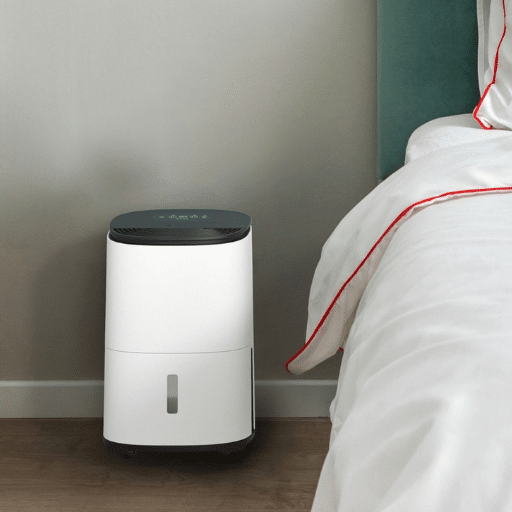
Basements
Mold and dampness are common problems in basements because of high humidity, as they are under-ground and less ventilated. The use of a dehumidifier can, as a matter of fact, not allow the formation of mold and spread of musty smells, and it can also protect the stored goods from being damaged. Look for models with a larger capacity that can deal with the often higher humidity level of basements.
Bedrooms
Keeping a bedroom’s humidity level within the comfortable range is very important for sound sleep and respiratory health. A dehumidifier is one of the most effective ways of combating allergens like dust mites and mold spores, which in turn will enhance the quality of air. Go for a silent unit with a lower noise rating to ensure no disturbances while sleeping.
Bathrooms
Bathrooms are inevitably full of water vapor due to hot showers and baths. Besides being compact, a dehumidifier will be easy to move around. It will also keep the humidity under control, the mirrors will not fog up, and mold and mildew won’t thrive.
Kitchens
Cooking and boiling water can release significant moisture into the air, especially in smaller kitchens. A dehumidifier in this area will not only help remove the excess humidity but the cooking spaces will also be much more comfortable, and there will be no more problems with windows and cabinets due to condensation.
Living Rooms
Living rooms are often occupied and usually consist of big open areas. A dehumidifier will prove to be a great help in maintaining a balanced indoor climate, particularly in humid regions or the rainy season. It is wise to look for energy-efficient models that are able to accommodate larger spaces without significantly increasing the electricity bill.
By Using a dehumidifier tailored for each area of your house, you can create a more comfortable and healthier living environment.
Dehumidifier for Basements: A Must-Have
Apartments, being below ground level and poorly ventilated, are extremely likely to suffer from excess humidity. The moisture issue that exists in apartments brings along various problems like mold development, unhealthy air, and destruction of furniture, walls, and floors. The present-day research states that the best indoor humidity level is between 30% and 50%, but without a proper dehumidification system, basements usually have humidity levels that are way beyond this range.
The modern dehumidifiers that are designed for basements have unbeatable moisture extraction power besides the high-tech features. For example, a few models are capable of extracting more than 50 pints of moisture from the air every day and that too in areas of 1,500 sq. ft. or less. Moreover, savings on electric bill is one of the benefits that come with using many of the contemporary energy-efficient dehumidifiers that are equipped with features like built-in hygrometers, automatic shutoff systems, and continuous drainage options, thus making them low-maintenance and cost-effective. Even if the Energy Star-certified unit is effective for humidity control, it will still be 15% more energy-efficient than the non-certified one.
A quality dehumidifier for basements has the advantages of preventing the occurrence of diminutive long-term structural damage and in making a healthier living area. It is important to choose a desiccator that meets the specific needs in terms of the area of your basement and its humidity level for maximum efficiency. Besides, it’s important to do regular cleaning of the filter and drainage system to keep the system efficient and to prolong its life.
Best Practices for Dehumidifiers in Bathrooms
Select the Appropriate Capacity
A dehumidifier rated for small areas, like restrooms, has to be chosen. Get one that can manage the high moisture levels that are normally produced by taking showers and baths. For little toilets, a 20-30pint dehumidifier might be enough.
Pick A Device Offering Continuous Drainage
A unit with a continuous drainage feature will not require frequent water tank emptying. It is very beneficial in the case of bathrooms where humidity is always up, because it will make the operation to be always uninterrupted.
Dehumidifier Should Be Used During and After Showers
The dehumidifier should be turned on during the shower and should keep running up to at least 20-30 minutes after. This method helps to take the additional steam out of the air before it turns into water and clogs up walls, mirrors, or ceilings.
Good Placement Is Necessary
The dehumidifier should be set up in the most humid places, like near the bathtub or shower. It must never be placed on a wet surface to avoid unsafe conditions and to ensure excellent performance of the device. The device should have a clearance of 6-12 inches all around for air circulation.
Cleaning and Maintenance Should Be Done Regularly
Keep the tank, filters, and the exterior of the dehumidifier clean all the time so that molds do not form and the device is not inefficient. The user manual will have specific cleaning intervals but generally, most devices suggest cleaning in 1-2 weeks, especially in the bathrooms, which are humid areas.
Portable Dehumidifiers for Mold Control
When it comes to avoiding and controlling the development of mold in places with high humidity, portable dehumidifiers are very necessary devices. They quickly and effectively get rid of the moisture that is in excess and the humidity that is at the level of the good one for preventing mold and mildew. To help you choose wisely, here is a rundown of five portable dehumidifiers that come highly rated, along with their main features:
Frigidaire High Efficiency 50-Pint Dehumidifier
Capacity: Good at taking out 50 pints of moisture a day.
Features: user-adjustable humidity controls, a constant drain feature that is built in, and a filter that is easy to clean because it is washable.
Ideal For: Large areas such as basements, attics, and living rooms.
HomeLabs 4,500 Sq. Ft Dehumidifier
Capacity: Good for taking out 50 pints of moisture a day.
Features: Energy Star certified, built-in wheels and handles for easy moving, and the option of a 24-hour timer.
Ideal For: Houses, offices, and large indoor spaces.
Vremi 22 Pint Compact Dehumidifier
Capacity: Withdraws up to 22 pints of moisture from the air every day.
Features: Modern and noiseless operation, automatic turn-off feature, and cost-efficient electricity use.
Ideal For: Smaller rooms for example, bedrooms, bathrooms, and laundry spaces.
TOSOT 20 Pint Dehumidifier
Capacity: Gets rid of 20 pints of moisture every day.
Features: Quiet operation, low power consumption, and hook-up for a continuous drainage option.
Ideal For: Flats, little offices, and cupboards.
Keystone 35 Pint Dehumidifier
Capacity: Day by day removes 35 pints of moisture.
Features: LCD control panel, computerized controls, auto-reset after power outage, and ease of movement with wheels.
Ideal For: Medium-sized places such as garages, kitchens, and children’s play areas.
You will find that each one of these dehumidifiers has different qualities that are dedicated to the different needs and this will let you get rid of the mold and maintain a pleasant environment in your area. Do remember to take into account the size of your room, the need for portability, and the special features when deciding on the best unit.
Reducing Humidity and Moisture Levels
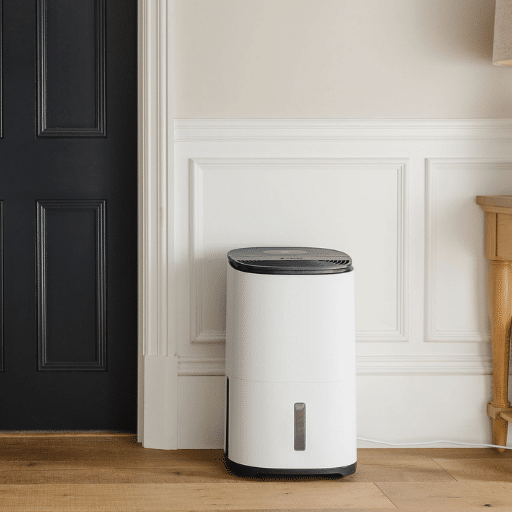
A combination of various methods such as proper ventilation, application of dehumidifiers, and regular maintenance practices is essential for effectively bringing down the humidity and moisture levels in the house. Recent studies reveal that the indoor humidity level that is most favorable is between 30% to 50%, as the Environmental Protection Agency (EPA) suggests. If humidity levels go beyond 50%, it will be conducive to the growth of mold, mildew, and dust mites, which may result in health issues such as allergies and respiratory problems.
Key Strategies for Reducing Humidity
Use of Dehumidifiers
Modern dehumidifiers are extremely effective and come with the latest technology. An example of this is the units equipped with hygrometers that can adjust themselves to keep the humidity level constant. One powerful dehumidifier can take out 6 gallons of moisture a day which is great for big areas and it has a 50 pint capacity.
Improve Ventilation
The right exhaust fans in the right places can lower the humidity in your home through the proper ventilation method. Areas such as bathrooms and kitchens being the most humid places should be ventilated properly by using exhaust fans or installing windows designed for cross ventilation thus improving air circulation.
Seal Air Leaks
Small openings and cracks in and around your windows and doors can let in humid air. It has been reported that sealing these cracks with weather stripping or caulking may cut humidity levels in your home by as much as 20%.
Maintain Indoor Plants Responsibly
Indoor plants add to the decor and improve the quality of air in a house, at the same time, they give out moisture too, hence, if you put them in the right place or reduce the number of plants in the rooms with high humidity, it could be a good way to keep the moisture level indoors balanced.
Regular Maintenance
Routine maintenance activities such as cleaning gutters, repairing leaks, and checking insulation take care of the excess moisture problem. For instance, if the gutters are clogged, then so much water would be trapped, which eventually leads to increased humidity around walls and windows.
By employing these techniques along with the modern dehumidification tools, homeowners can develop a comfortable and mold-free zone. An energy-efficient model equipped with smart controls might be more convenient for maintaining the right humidity level all year round.
Optimal Humidity Levels to Prevent Mold Growth
It is paramount to control the indoor humidity to avoid mold growth since the moisture in the air is the main factor that allows the molds to spread. The Environmental Protection Agency (EPA) suggests that indoor relative humidity (RH) should be maintained between 30% and 50% as a general rule in order to greatly reduce the chances of mold’s appearance. Moreover, even a little over 60% can cause a lot of molds and other allergens to be present and become a nuisance.
A hygrometer is a very good tool that can be used to measure the indoor RH accurately, thus making it easier to monitor and control humidity. If the indoor humidity is over 50% stubbornly, then the use of a dehumidifier or an increase of airflow like putting exhaust fans in kitchens and bathrooms, can be some of the good ways to keep the indoor humidity in good conditions. Furthermore, chilly periods of the year bring the need to maintain indoor humidity above 30%. Otherwise, discomfort will come or even wooden furniture and floors will be damaged because of too much dryness as a result of low humidity levels.
Dehumidifier technology has seen a marked rise in efficiency in the area of humidity level control. The modern energy-efficient models often come with built-in hygrometers and smart controls that can take over and automatically adjust the operations so as to maintain a balanced environment. For example, some have even been designed for areas as big as 1,500 square feet, taking out 50 pints of moisture each day, thus playing a direct role in preventing mould in the larger homesteads.
If people would combine these techniques together and also keep their ears to the ground as far as the RH ranges are concerned, they would not only be able to make their living conditions healthier but also keep their homes from the adverse effects of mold growth.
How to Use a Dehumidifier Effectively
For optimum use of a dehumidifier, first and foremost, you need to pick the size and capacity that best suits the area you want to dehumidify. The performance will be maximized if you consider models that are meant for your room’s size and humidity levels. The dehumidifier should be installed in the middle of the room, preferably close to the spot where the humidity is the highest, and make sure that there is a space of at least 6-12 inches around the unit for good airflow.
Set the dehumidifier according to the indoor relative humidity (RH) level—usually between 30-50% for most houses. Depending on the model, empty the water collection tank regularly or connect a continuous drainage hose if the option is available. While using the device, keep doors and windows shut to stop the infiltration of extra moisture. The filter and coils should be cleaned periodically according to the manufacturer’s directions to keep the device efficient and prolong its life. Following these guidelines, you will not only control the moisture but also make the indoor environment comfortable and healthy.
Combining Air Purifiers with Dehumidifiers
The combination of air purifiers and dehumidifiers not only improves the quality of indoor air but also makes a healthier living space. The presence of dehumidifiers aids in taking away the extra moisture, thereby keeping the mold and mildew away. Simultaneously, air purifiers are removing the contaminants from the air, which fall into the category of dust, allergens, and smoke. This duo is dealing with the problems of air quality in an efficient manner and thus, is considered the best partners for homes with allergy sufferers, respiratory problems, or humidity challenges. Out of the five advantages that are noteworthy and the explanation of mixing these devices, here are the first and most significant one:
Dual Functionality for Comprehensive Air Quality:
Air purifiers do clean the air by capturing the allergens, which are like dust mites and pollen, while the dehumidifiers do lower the humidity levels, leading to a significant reduction of the risk of mold and mildew.
Prevention of Allergens and Mold Growth:
Allergens are generally present in a wet atmosphere. Dehumidifiers do give moisture a big cut that forces the conditions for mold and dust mites to be very unfavorable and at the same time, air purifiers do help in filtering out the spores and particles that float in the air.
Improved Respiratory Health:
By cutting down on airborne irritants as well as excessive humidity, the mix can assure the patients suffering from asthma, allergies, or other respiratory issues that they will have cleaner and easier breathing thus, suiting the condition of the lungs and respiratory system.
Enhanced Energy Efficiency:
The new-age devices have such technology that they hardly detune each other and thus, ensure the peak performance to be at the minimum power consumption while the two are being operated together. There are few models that even offer the feature of combining both functionalities in a single unit.
Reduced Maintenance for the Home:
With the airborne dust being less and the humidity being well balanced, cleaning of the surfaces is made more convenient and also the impact of the w.r.t. the walls, furniture, and appliances caused by moisture or mold, is lessened.
The choice of these two technologies is such that the house is not only comfortable but it is safe for health and structure as well.
Additional Tips for Mold Prevention
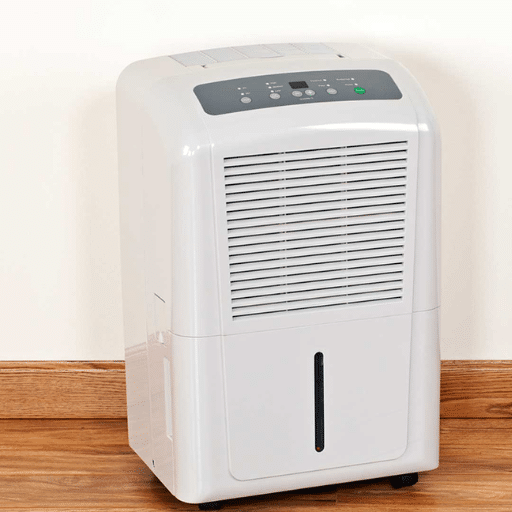
Make Sure There Is Proper Ventilation: Areas such as bathrooms, kitchens, and laundry rooms should be well-ventilated through the use of exhaust fans or by opening windows. Reducing humidity is one of the benefits of ventilation and this makes mold growth more difficult.
Promptly Fix Leaks: Leaks in the roof, walls, and plumbing should be repaired without delay. Moisture buildup can be caused by even tiny leaks, and this is a favorable condition for mold.
Humidity Levels Indoors Controlled: Indoor humidity levels should be kept between 30% and 50% using dehumidifiers or air conditioners during warmer periods. A hygrometer should be used to check and keep the levels right.
Gutters Should Be Inspected and Cleared Regularly: Upkeep of gutters is necessary to stop water from being trapped next to the house’s foundation, as water that has been trapped can seep into the basement or crawl space, thus fostering mold development.
Items Should Be Stored Properly: Do not store paper, fabric or other porous materials in damp areas such as basements or attics. Use plastic containers rather than cardboard boxes for storage to avoid mold attack.
Identifying and Eliminating Sources of Moisture
I focus on moisture removal and detection by checking the same places that are prone to dampness regularly: basements, crawlspaces, and the vicinity of windows or pipes. I prompt repairs of leaks and, in humid areas, I improve the ventilation by dehumidifiers or fans. I watch out for weatherproofing, for instance, sealing cracks or making sure that insulation is working properly, to avoid water coming in. My being watchful and quick to act allows me to effectively reduce the amount of moisture and thus the risk of mold growth as well.
Regular Maintenance and Cleaning Practices
For a hygienic and safe area, proper maintenance and cleaning methods should be used at all times. Here are five major practices to sum up:
Vacuuming and Dusting all the Time
Regular vacuuming and dusting are the best ways to prevent dust, allergens and dirt from accumulating. Give more attention to areas with the most foot traffic and use HEPA filters in vacuums to improve air quality.
Cleaning of Air Vents and Filters
To keep the correct airflow and minimize the dust and pollutants, change air filters once every three months and clean the vents often.
Gutters Inspection and Cleaning
Twice a year, check the gutters to ensure no clogs, which may lead to water damage or pest infestation. Take away leaves, debris, and dirt.
Sanitizing of High-Touch Surfaces
Daily cleaning of frequently touched surfaces such as door handles, countertops, and light switches is necessary to limit the spread of germs and bacteria.
Checking Appliances for Efficiency and Cleanliness
The inspection and cleaning of appliances such as refrigerators, ovens, and washing machines should be done. Lint from dryers should be removed, and the presence of mold should be checked in washing machine seals.
Understanding Mold Needs and Its Lifecycle
Mold is essentially a fungus that flourishes under certain circumstances. It is thus very significant to know its conditions and its life cycle so as to control and prevent its growth in the house or workplace. Here are the main factors and steps of the process that lead to the development of mold:
Moisture
The presence of moisture is a must for the growth and dispersal of mold. Water leaks, high humidity, condensation, and water damage can all be sources of this moisture. Mold mainly thrives in the bathrooms, kitchens, and basements, as these places are constantly getting wet; thus, daily exposure to water.
Temperature
Around 60°F to 80°F is the most common range for the growth of the majority of mold species. This range is usually referred to as the warm temperature. Some, however, may even endure the cold and hot, become the temperature control of the environment is very crucial in preventing the molds.
Food Source
Mold grows on and consumes organic substances like wood, paper, fabrics, and even dust. Clutter in homes, decaying organic matter, and regular poor cleaning of the places can be quite inviting for molds as they present them with a lot of sources to feed on.
Lack of Ventilation
Inadequate airflow and stagnant air are two encouragements of mold to multiply. The less air circulation, the more the likelihood of the closet, attic, and storage areas being unhygienic and thus supplying the molds with the environment they need to thrive.
Time
Mold does not come up magically—it comes up after some time and only after it has established itself and spread. After the suitable surface is exposed to the right conditions for the landing of mold spores, the growth can start as early as 24 to 48 hours. Regular monitoring and inspections are necessary to detect the presence of mold at an early stage in its lifecycle through maintenance.
By focusing on these factors, you will be able to interfere with the mold’s life cycle, and thus you will have successfully avoided it from becoming a chronic problem.
References
- Boosting Mold Aerosol Reduction and Dehumidification Performance
This study explores the effectiveness of dehumidifiers in reducing airborne molds and enhancing dehumidification.
Link to source - Effects of Combined Dehumidification and HEPA Filtration
This pilot study investigates how dehumidification and HEPA filtration reduce mold spore counts in indoor environments.
Link to source - Preventing Mold Through Better Design and Dehumidification
This article discusses the cost-effectiveness of dehumidification in preventing mold issues in buildings.
Link to source
Frequently Asked Questions (FAQ)
How can a dehumidifier help in eliminating mold?
A dehumidifier works by removing excess moisture from the air, which is essential for preventing mold growth. Mold thrives in damp conditions, and by controlling humidity levels, a dehumidifier makes it harder for mold spores to settle and proliferate in your living spaces.
What is the ideal humidity control level for fighting against mold?
The ideal indoor humidity level for fighting against mold is typically between 30% and 50% relative humidity. Keeping humidity within this range reduces the likelihood of mold growth and helps maintain cleaner air quality.
Can a mini dehumidifier effectively reduce humidity in small spaces?
Yes, a mini dehumidifier can effectively reduce humidity levels in small spaces such as bathrooms, closets, or small bedrooms. These compact units are designed to remove moisture from the air while remaining portable and energy-efficient.
What are the signs of mold growth in your home?
Signs of mold growth include visible patches of mold, a musty odor, and increased allergy symptoms. If you notice condensation on windows or walls, it may also indicate high humidity levels, which can lead to mold growth.
How do I choose a good dehumidifier for my basement?
When choosing a good dehumidifier for your basement, consider the size of the area, the unit’s pint capacity, and features such as auto shut-off and continuous drainage options. Energy Star-certified models are also recommended for energy efficiency.
What role do HEPA filters play in air purification related to mold?
HEPA filters play a crucial role in air purification by trapping airborne mold spores and allergens. Using a dehumidifier with a HEPA filter can significantly improve indoor air quality by reducing the number of mold spores in the air.
Can I use a dehumidifier to remove moisture from the air in the bathroom?
Absolutely, using a dehumidifier in the bathroom helps remove moisture from the air, preventing mold and mildew from forming in damp areas. It’s especially effective after showers or baths when humidity levels spike.
How does continuous drainage work in dehumidifiers?
Continuous drainage in dehumidifiers allows for the automatic removal of collected water without the need for manual emptying. This feature is particularly useful for larger units in basements or areas prone to excess moisture.
What is the difference between a dehumidifier and an air purifier?
A dehumidifier primarily focuses on reducing humidity levels by extracting moisture from the air, while an air purifier is designed to remove contaminants, such as dust, allergens, and mold spores, improving overall indoor air quality.

